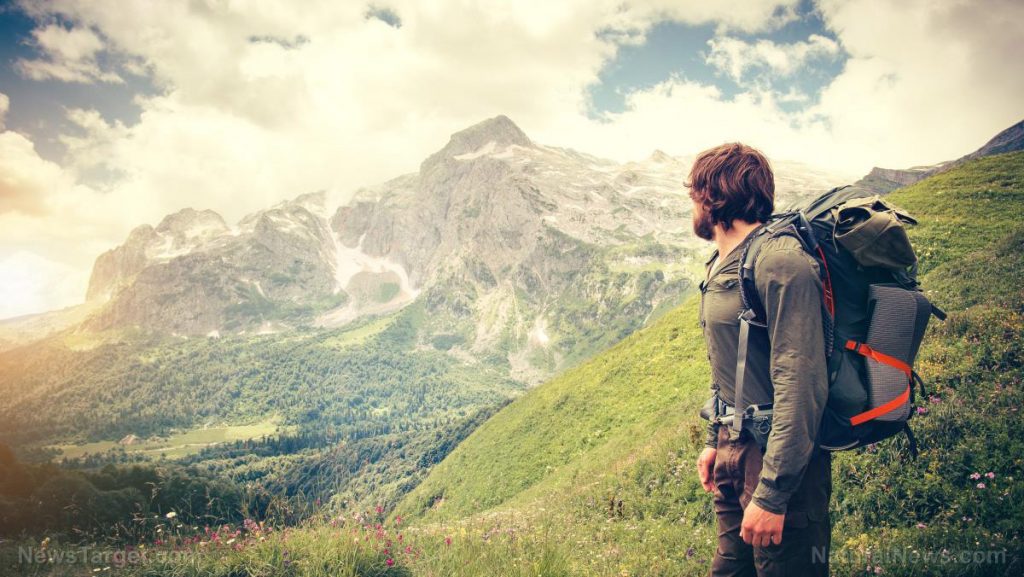Living off grid or in the remote wilderness can be an exciting, liberating experience. After all, hunting, fishing, and crafting your life off of natural resources all take skill and cunning. Additionally, living off your own efforts provides you a level of autonomy not often found in the routines of more modern, connected life. If you found yourself googling “how contagious is the coronavirus“, now maybe the right time to head out on your own.

However, most often, remote or wilderness living is done in a fairly controlled setting in that you are able to make the choice to be there. In fact, in these instances, living in this fashion is something more analogous to an extremely rustic vacation. In times, however, when you find yourself lost or suddenly thrust in the wilderness, having to survive is an entirely different type of exhilaration. In this instance, surviving is more frantic, and the overall experience can be one of desperations unless you take some sort of preparatory measures.
You can also use your compass, or https://www.globosurfer.com/best-compass-watches/ to ensure you are looking in the matching direction. Once you have an idea of where you (probably) are, you can set out walking, using your compass to ensure you are headed in the general desired direction.
- Not a knife
For anyone wanting to be prepared, there are many better tools than a knife. Most of these are multi-functional tools that, yes, include a knife. However, they also include pliers, mini-saws, and screwdrivers. Some types are equipped with compasses in the handle, and some also include hollow handles for things such as matches.
The best multi-functional tool, however, will be larger than your average knife. It will look more like a multi-functional hatchet and include, among other things, a hefty knife blade and a hammer head.
- Shoes
If you are reading this, you are preparing for the worst. Of course, you might also already be lost in the wild with your phone while somehow enjoying top-notch internet connectivity. If this latter scenario is the case, stop conducting research on what you should have brought with you and call for help. Also, since Amazon delivers by drone, just in case rescuers do not soon find you, make a quick purchase for the best hiking shoes you can afford.
They should be waterproof and have steel-toes. If you go for the hiking-sneaker hybrids, you should get an ankle-high pair. Finally, the best ones will also be something akin to miniature suitcases you wear on your feet. Regarding these types of shoes, they will have tiny pockets for small tools or bandages.
- Grenades
The unfortunate thing about finding yourself unwillingly in the wild is that at some point, you will need some type of first-aid gear. When that time comes, it means your situation has slipped a notch or two from precarious to probably leaking blood. In this moment, you should have some cloth bandages and some disinfectant gel. Additionally, the gear should contain some aspirin as well as finger splints or a thin, telescopic rod that you can use as a long-bone splint. Finally, it should contain some broad-spectrum antibiotics as well as anti-nausea medication.
Perhaps one of the most important things about your first-aid gear is that it should not come in a big, square, plastic box. Instead, it should come in the form of what is now known as a survival grenade. Survival grenades are made of high-tension bungee or climber’s rope. They tie up into a compact container that is small enough to fit on a belt loop, yet they are big enough to hold all the aforementioned items except the telescopic rod. Finally, they can be used as rope.
- Water filtering
If the first rule of impromptu wilderness survival is “you will get hurt,” the second one is “you will get thirsty.” As such, you will want some type of iodine tablets that you can use to disinfect your stagnant water source. However, you can also purchase water-purification straws that filter most bacterial agents out of whatever puddle you have been fortunate enough to find. If you do not want to drink out of a straw stuck in a puddle, you can purchase a couple Fill2Pure Filter Bottles. These are much handier than sucking mud through a straw.
- Fire
Since you are no magician, you cannot, of course, carry around your lucky ball of fire. However, you can carry around the next best thing, which is a friction-based ferro rod that can cast sparks when struck. Additionally, some are infused with oil, so once you strike them, they stay lit. Additionally, since it might be wet, raining, or flooded, you should purchase some waterproof, foam kindling. In a pinch, these things are handier than having an extra pizza. Waterproof foam kindling, for instance, will catch fire and stay aflame in the wettest of conditions, allowing you to build a fire and keep whatever is left of your fingers and toes from freezing black.
- Flashlight
Apparently, there are lots of rules pertaining to the wilderness. It will get dark ranks pretty high on the list. When that time comes and your fire has burned low, you will want a flashlight that does not rely on batteries. These types of non-battery flashlights involve winding a crank to generate low levels of electricity.
Of course, there are many small flashlights with semi-long-lasting batteries. The important thing is to find one that will fit in your survival grenade. If the light is too large to fit inside your grenade, ensure it will fit on your belt or in a backpack. Additionally, it should be waterproof. If you want to be able to see more than just a few feet in front of you, ensure your flashlight is at least 500 lumens.
- Saw
Most of the saw blades contained in multi-functional tools are designed to see only through small pieces of wood that you can hold in your hand yet cannot break. They might even cut through small branches, but for larger branches or even logs, you can purchase a wire saw. These types of saws have handles on either end of a strip of wire that is essentially barbed wire. The barbs are very tiny and very sharp. With a little back-and-forth motion, you can grind your way through significant sections of wood.
Additionally, you can purchase what is known as a handheld chainsaw. A handheld chainsaw consists of a full-size chainsaw blade with handles on each side. They are very similar to wire saws, but they are for larger stumps or logs.
- Food
Okay, you are lost in the woods. Although you might have been able to use your handheld chainsaw to saw enough wood for a small cabin, you might still have not been able to get to the grocery store. Consequently, you will need prepared meals with long shelf lives. These are typically in the form of a meal ready to eat (MRE). They come in easy-to-carry pouches, and they consist of bean-, sauce-, or batter-type foods, such as beans or stew. They are highly processed and packed with salt and are generally low in fiber. That said, they will keep you alive.
- Whistle
In addition to signalling to others your position, a whistle will largely keep animals away from you. If you find yourself lost in bear country, a whistle is helpful because you want bears knowing you are coming before you know the bears are coming.
- Maps and compass
Okay–so this list happens to squeeze two items into one. However, these items go hand-in-hand, as they say, so having only either a map or a compass is like being lost in the wilderness–not of much use to the average person.
In terms of a map, you should get a topographical map. With a topographical map, you can find your location by making your way to high ground and then comparing at least two landmarks in your lovely vista with the two most likely matching points on the map. You can also use your compass to ensure you are looking in the matching direction. Once you have an idea of where you (probably) are, you can set out walking, using your compass to ensure you are headed in the general desired direction.











